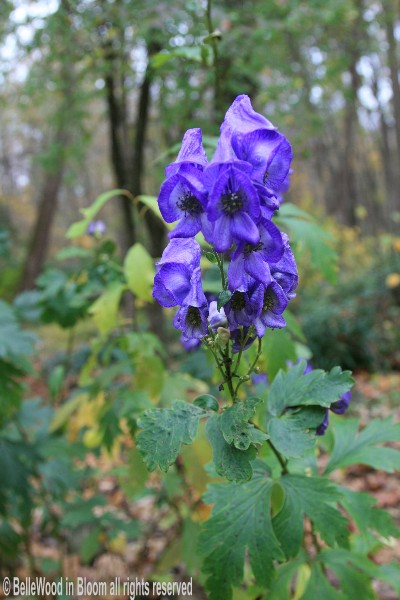
All content included on this site such as text, graphics and images is protected by U.S and international copyright law.
The compilation of all content on this site is the exclusive property of the site copyright holder.
Friday, 29 March 2013
Propagating Aconitum arendsii

I'm especially fond of autumn flowering monkshood, Aconitum arendsii. What's not to like - it flowers in September / October with showy blue flowers on sturdy 4 foot tall stems. Sun to light shade in average to clay soils, damp but not soggy, and its happy. What's more, it is quite poisonous (another common name is wolf's bane) and deer won't eat it. Some sources suggest propagating it in the fall, which seems odd to me since that's when it is flowering and why would you disturb it at that time. Besides, right now I don't have a choice.
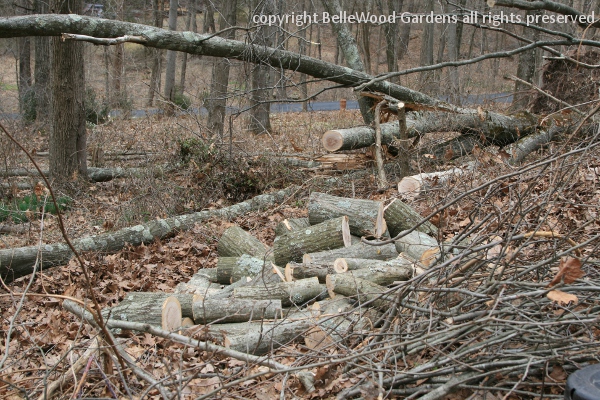
Paul is cutting on the trees that fell down in Superstorm Sandy, towards the street, close to the house.
He claims that 80% of the work is cutting and moving brush, until he can get to the burnable size wood.
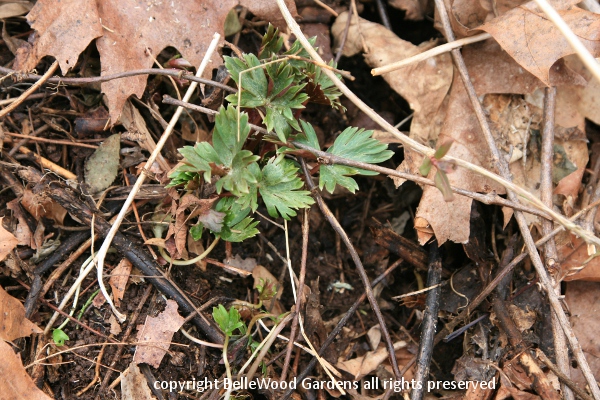
It's not that the trees fell on the monkshood plants last fall. But they are beginning to emerge
where he'll be standing and brush has to be moved. I can put baskets over the barely showing
peonies but I cannot mark off the entire herbaceous border, much as I might want to do so.
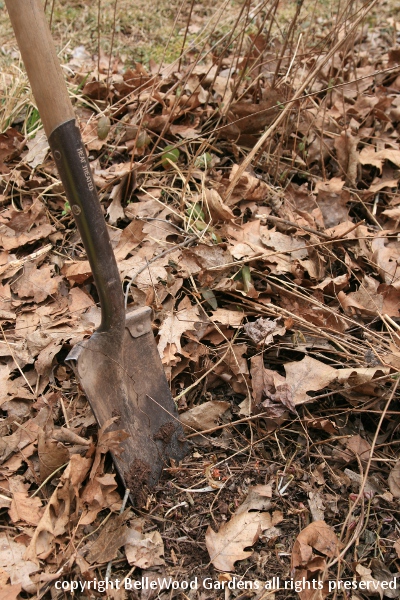
So dig I must. That's O.K. I think digging fall flowering plants in Spring is the best time.
I'm using a poacher's spade. The narrow, dished blade is ideal for digging in crowded spaces.
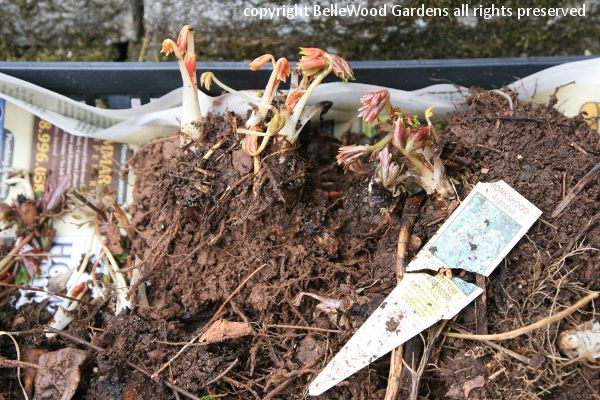
A shallow nursery tray lined with newspaper holds the clumps of monkshood as I dig them.
The pale yellowish color of the shoots indicates that this one wasn't even above ground. And
the brittle nursery label is who knows how old, back from whenever I bought the first plants.
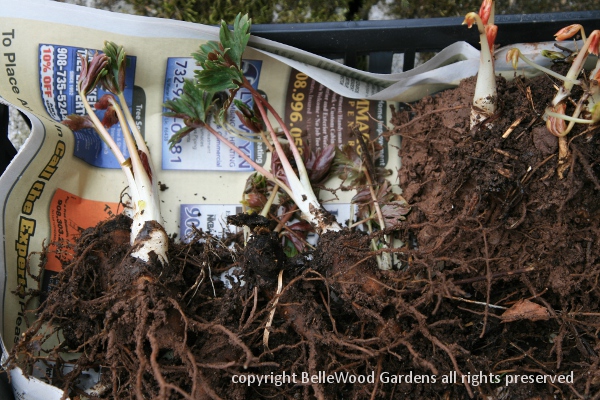
The individual crowns separate quite easily. Most are a good size, and of course some are smaller.
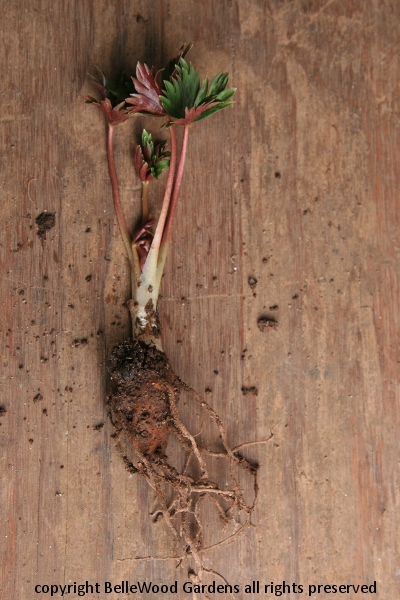
This early in the growing season there don't seem to be any new feeder roots. They'd be thin, white, and delicate. Excellent, it means less disturbance for the plants. I separated the monkshoods and repotted them individually, adjusting the size of the pot to size of the division with the largest ones in quart pots. About 50 pieces altogether, and more clumps to dig. Watered, since it wasn't raining. I expect excellent survival rates from these propagations, which means I better start thinking of additional places to plant them.